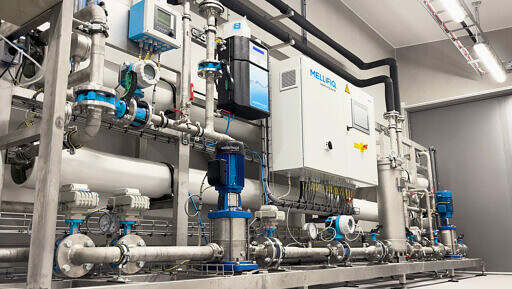
Improving a Recirculating Aquaculture System (RAS) Using Ozonation and Protein Fractionators
Zatražite ponuduIzazovi
Introduction.
For this project, we are traveling to the Åland Islands in Finland to work with a client who manages fisheries that play a central role in regional environmental conservation through fish stocking, habitat restoration, stock monitoring, and regulatory efforts. The spread of harmful pathogensand increasingly strict regulations led the fishery conservation center to seek a more reliableand efficient RAS treatment solution.
Watch Our Case Video About RAS System Using Ozone Skimmers.
The problem.
One of our client’s facilities in the region operates are circulating aquaculture system (RAS) to support fish populations, uphold environmental standards,and meet EU discharge directive targets.
Despite the use of traditional UV purification, the facility faced significant water quality challenges and elevated fish mortality rates.
High concentrations of dissolved organic matter (DOM) created suboptimal conditions for fish health, promoting the spread of pathogens and increasing nutrient loads—particularly phosphorus and nitrogen—in the discharged water. This not only threatened fish mortality but also jeopardized compliance with EU water discharge directives. The spread of harmful pathogens, combined with increasingly strict regulations, led the company to seek a more reliable and efficient RAS treatment solution.
With extensive expertise in water treatment challenges, Mellifiq was well-positioned to take on the task and deliver a tailored system designed for the conservation center’s needs.


The solution.
To address the issues, Mellifiq engineered and implemented an advanced water treatment solution combining the Ozonetech RENA Pro ozone system with high-efficiency protein fractionators. This multi-stage design was specifically tailored to the site’s conditions.
In the first stage, recirculated water passes through the protein fractionator, also known as a skimmer, where ozone injection generates microbubbles that coagulate and physically separate dissolved organic matter.
This process significantly reduces nutrient loads, enhances oxygen levels, disinfects the water, stabilizes water quality, and lowers mortality rates.
Working in synergy with the fractionator, the RENA Pro system injects concentrated ozone to oxidize and eliminate bacteria, viruses, parasites, and fungi. Ozone also enhances floc formation and foam separation, further increasing the system’s purification capacity. The result is a fully chemical free, highly efficient disinfection process that eliminates the need for antibiotics or biocides.
Evaluation.
The installed solution has significantly reduced fish mortality rates and eliminated the facility’s reliance on UV disinfection. Water remains crystal-clear, and the system operates with minimal maintenance—delivering a highly efficient, fully chemical-free disinfection process that requires no antibiotics or biocides. Additionally, the facility now achieves full compliance with EU discharge targets for phosphorus and nitrogen, ensuring stable, long-term operation.
Mellifiq served as a full-scope provider—managing everything from system design to commissioning—reinforcing its role as a leader in sustainable aquaculture innovation.

Povezani referentni projekt.

Full Scale API Removal Plant to Comply with EU Active Pharmaceutical Removal Directive

Treating wastewater in order to produce reusable technical water

Mellifiq solves enduring groundwater problem with our AquaFloc

Mellifiq’s Innovative Drinking Water Plant in Östersund


